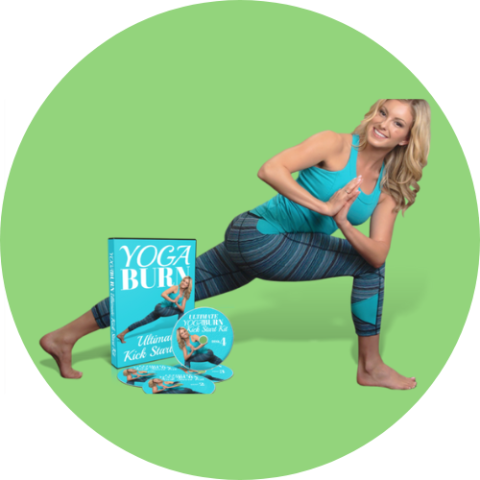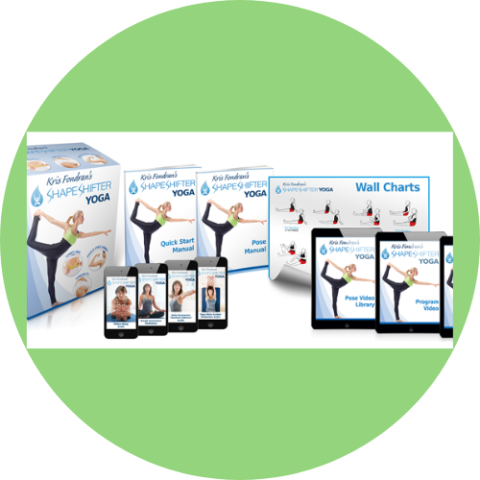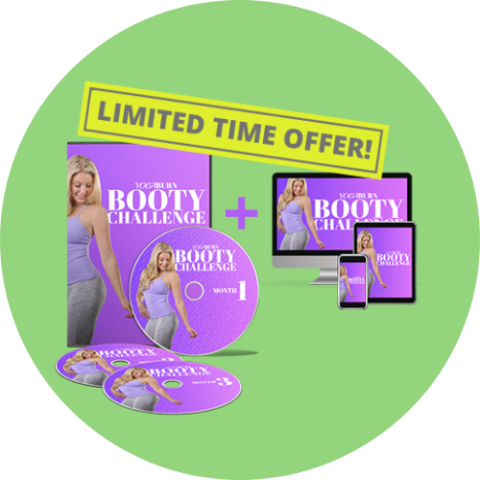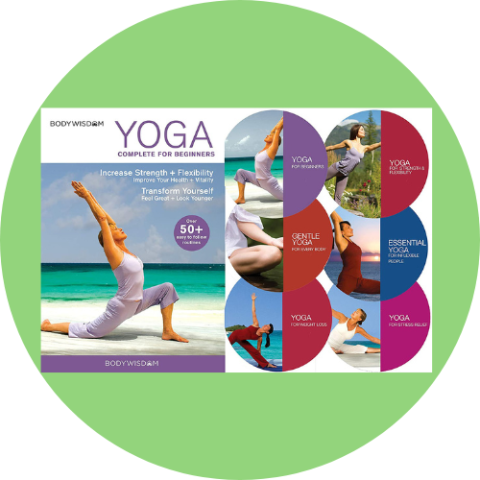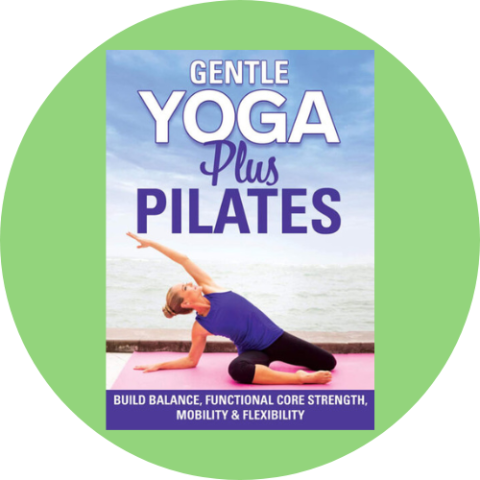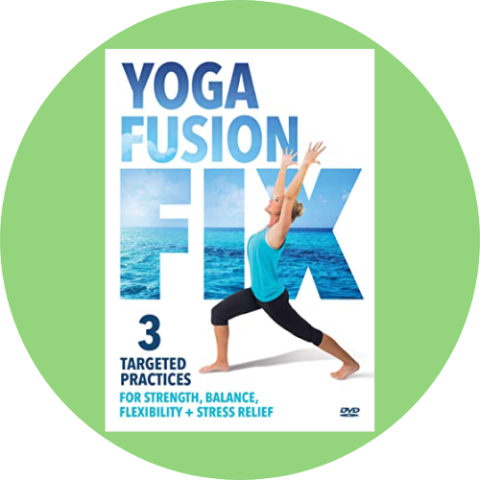Yoga for Beginners 2024 – A Complete Guide on How to Get Started
By Vanessa Richards
January 10, 2024 • Fact checked by Dumb Little Man
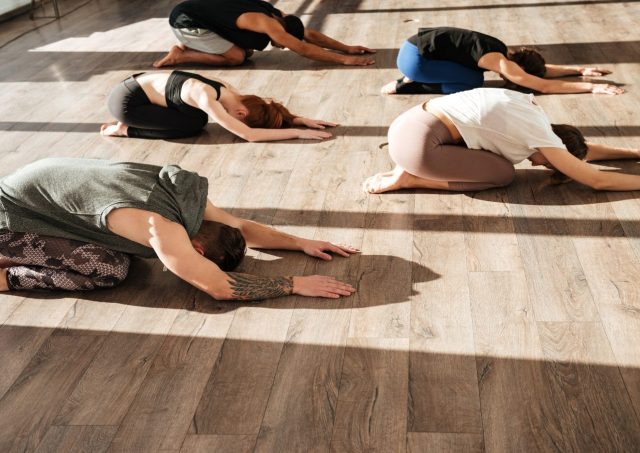
Although it is often associated with femininity, yoga has gained more and more notoriety among men lately, too. It comes with a plethora of benefits for all genders, hence its growing popularity.
But then, while everyone can afford to spend 15 to 30 minutes a day for yoga, most newbies have no clue where to begin. Yoga for beginners can raise a few question marks.
There are many yoga poses you can try, each of which has its benefits. You can try yoga practice in an organized class in a gym, but the good news is you can also try it in the comfort of your home.
This article will give you all the details you need to practice yoga at home – from getting a yoga mat to understanding what hatha yoga means.
Yoga for beginners: What is yoga?
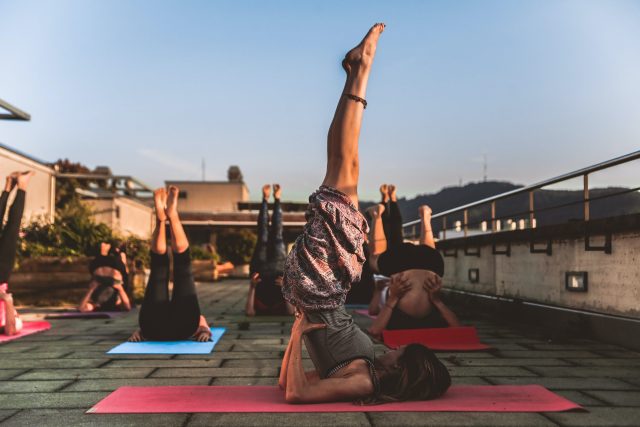
Yoga is not a discipline itself but an ancient practice. It covers multiple disciplines – spiritual, mental, and physical. Originating in India, it has spread all over the world – you can attend a yoga class anywhere.
Yoga is based on an ancient word that refers to unity. The practice aims to come up with a union between the spirit, mind, and body. But at the same time, it also connects the universe and self-consciousness. It neutralizes negative thoughts and provides a feeling of awakening.
Since it has been around for thousands of years, yoga has been through numerous changes. There are more interpretations and styles than ever these days. It has been adapted to different needs too, only to provide some sort of liberation from negativity.
Practicing yoga regularly will provide different benefits. Some do it for flexibility or endurance. Some others do it for calmness or an overall feeling of well-being. It has become one of the most popular forms of physical activity, and there are yoga classes all over the world now.
There are six different branches of yoga, and each of them has its unique particularities. Hatha yoga revives the mind and body – also known as the mental and physical branch. On the other hand, raja yoga is about meditation, as well as disciplinary practices.
Karma yoga reduces selfishness and aims to liberate you from negativity – some see it as restorative yoga. Bhakti yoga is about finding a positive way for your emotions and tolerance, while Jnana yoga is based on wisdom and boosting the intellect.
Finally, Tantra yoga aims to support relationships. No matter which branch you are interested in, there will be different physical yoga postures you can try. You can get your yoga mats and try them at home or reach a specialized yoga studio.
Most newbies choose to start with a yoga teacher. They reach a local yoga session and gain as much information as they can from the yoga instructor – they need a base, which they can expand later on in individual sessions at home.
History of Yoga
Yoga has been around for over 5,000 years and has been through numerous changes. Some would say it is a multifaceted type of practice, meaning it can overlap with other practices. Some people have found their spiritual meaning in it, but yoga has also been associated with exercise, philosophy, or religion.
While not perfectly clear, the origins of yoga seem to go back to the Indus Valley civilization in the bronze age. Other reports claim yoga started gaining popularity about 500BCE and falls in line with other religious concepts, such as Buddhism or Hinduism.
Four periods led to what yoga is today – Vedic, pre-classical, classical, and post-classical. Then, you have modern yoga, which is what you normally practice these days. Back in the day, yoga was much more intense and diversified. But these days, it seems modern yoga derives from hatha yoga.
Yoga was introduced to the western world in the 19th century. Many teachers traveled and shared their knowledge, and some of the philosophies had to change a little. Some of the most prominent figures include Swami Sivanada, Tirumalai Krishnamacharya, and Maharishi Mahesh Yogi.
Some of them wrote books, while others made it to the television to spread yoga around.
Benefits of Yoga
A simple look at different yoga exercises – such as the mountain pose – will make it pretty obvious. Yoga is calm yet intense. It will relax you and give you a good overall feeling, regardless of how advanced you are.
Physical and mental well-being
Yoga comes with both mental and physical benefits –age is irrelevant too. Besides, if you go through an illness, it will help you recover much faster. You can try out vinyasa classes at home, for instance, but you can also see an experienced yoga instructor and practice with your necessities in mind.
Flexibility, balance and strength
Such exercises will improve your flexibility, balance, and strength. Movements are slow, and each pose promotes deep breathing. Not only does blood flow throughout the whole body, but your muscles will also warm up.
Pain relief
You have no idea how hot yoga can get until you start practicing. More and more people turn to yoga for back pain relief. It is excellent for stretching and relieving pain in different parts of the body, but it will mostly work on the chronic back pain that everyone suffers from.
Yoga therapy is just as handy against symptoms of arthritis. It can ease the discomfort and painful sensations, especially around the joints. In this case, yoga teachers might be more appropriate than trying everything yourself.
Heart health
Regular yoga practice will support your heart because it can reduce levels of stress and inflammation throughout the body. Even early signs – such as high blood pressure or obesity – can be handled with different yoga postures.
Better sleep
Breathing techniques and basic yoga moves will help you relax and sleep better. A quick yoga workout a few hours before sleep will put you in the right mood. Your mindset will be ready to – fall asleep faster, but also stay asleep and wake up full of energy.
Enhances mood
Yoga also means more energy and a better overall mood. Sometimes, it is normal to feel mentally exhausted. Negative feelings kick in too. Yoga can prevent such issues. It will make you alert again, but it will also give you a boost of enthusiasm – you just need to find the right yoga pose.
Stress management
On the same note, yoga can help you with stress management too. While it is, indeed, a form of exercise, it will make you feel more relaxed and detached from negativity. With these thoughts in mind, yoga also supports weight loss, a healthy diet, mindfulness, and mental health.
The corpse pose is probably the most effective one for stress management. However, there are more yoga styles and different poses in each of them to help you out. If you are not sure, you can always get in touch with a registered yoga instructor for the basics.
Improve overall quality of life
Yoga will increase your strength, reduce anxiety and improve your quality of life. It may sound hard to believe, but such a positive approach to life will push you to make healthier decisions in life, whether it comes to your diet or personal relationships.
Moreover, some poses will boost immunity, self-esteem, bone health, brain functionality, and posture.
Can anyone practice yoga?
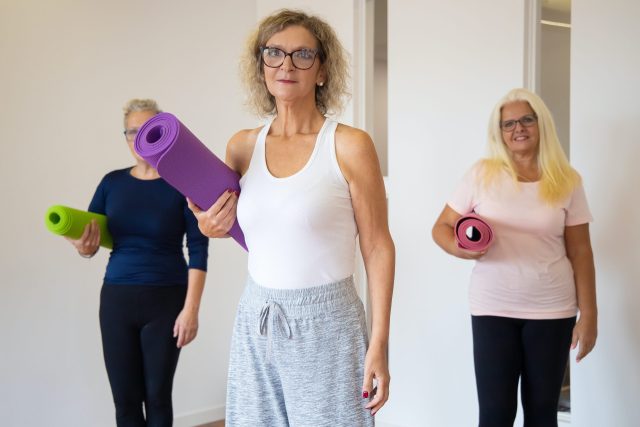
Yoga has been practiced for more than 5,000 years. It is often regarded as a gentle form of workout. Forget about lifting weights or running for miles. Yoga will support your joints and provide a feeling of fulfillment without putting pressure on your body.
Sure, one pose may seem more difficult than the other. The child’s pose could be easy for some people and almost impossible for others. People are different, and some may need to take it slowly. The good news is you can find a yoga block to work for you regardless of your condition.
You could be 15 years old or 75 years old. A man or a woman. An active gym goer or a complete newbie. You could opt for Iyengar yoga, yin yoga, or other styles. What works for some people will not work for everyone else, but you get the point – anyone can do yoga.
People recovering after injuries or surgeries can give it a try too. But then, this is why you need to do your homework first. You cannot start with the plank pose straight away. The best yoga workout is the one that matches your needs and goals, so beginning yoga implies a bit of research first.
How long until I become good at it?
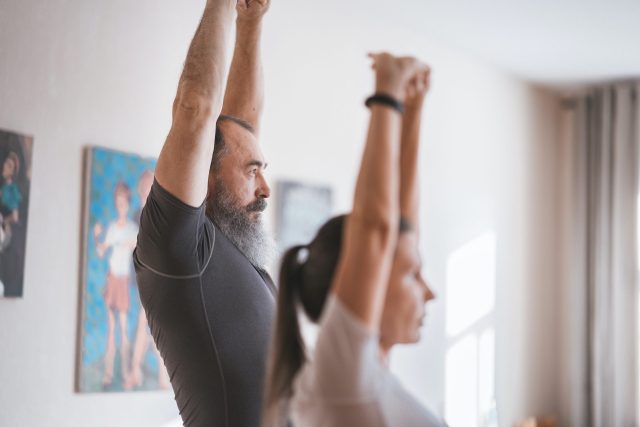
Yoga is so comprehensive that it will take ages to become an expert. Having the right yoga clothes and being able to do the downward-facing dog or seated forward bend will not be enough. There are plenty of rules out there.
The good news is you will only need an intense session to realize what yoga is about. Some poses might be difficult if you are not used to stretching, and you may experience a bit of soreness for the next couple of days – nothing to be concerned about.
The second session will feel a bit lighter, and the third one will be even better. The more often you do it, the less likely you are to experience soreness. But with so many options out there, there will always be a next challenging pose.
Regular practice does make you better. You will be better after a few months, but to become an expert, you will need years. And there is always something else to learn about, so at the end of the day, it depends on your goals and what you hope to achieve from yogic practices.
Where can I practice yoga?
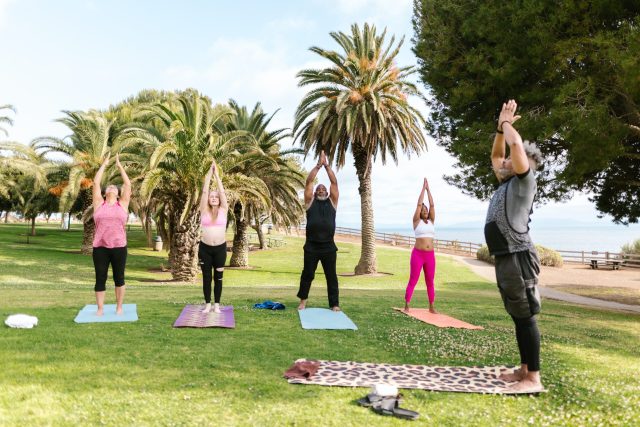
Generally speaking, beginner students will reach out to a yoga or meditation teacher for their first steps in this long yoga journal. Given the recent pandemic, online yoga classes are also pretty common – whether in groups or individually.
Most newbies choose a professional to get the basics. From that point on, you can practice yoga at home. Make sure you are consistent and dedicated enough. It is one thing to do it yourself and a different thing to have a trainer push you from behind when you slack.
Whether you opt for morning yoga, bedtime yoga, or perhaps after-work yoga, regular practice will make you better. Normally, you should go for a well-ventilated room. If you are at home, you could open a window. You want a nice draft of air.
While you can try yoga on the carpet, having a proper yoga mat is better. Make sure the grip is good. For example, some mats can slip on carpets, but they work well on hard floors. Choose something suitable for the environment.
Some poses will go pretty much anywhere, with or without a mat – take the balancing pose, for example. Balance on the left leg and keep the right one in the air. You can then swap and keep the left foot in the air. Such a pose would not always require a mat.
You can also perform yoga in a public gym – not necessarily attend a class. If you know what you are doing or you have some online tutorials, use a mat from the gym or bring your own, find a quiet corner and go for it.
What do I wear?
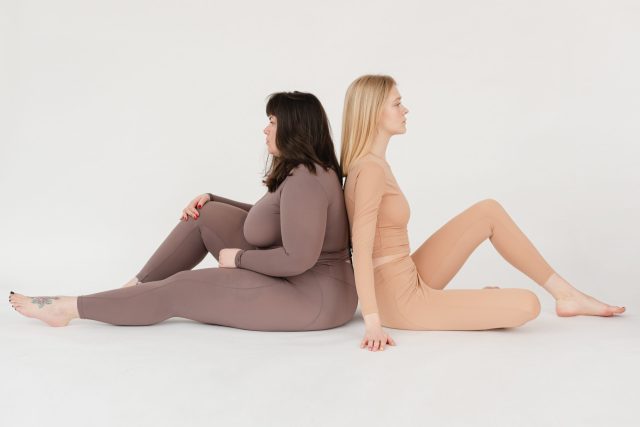
Whether you practice yoga at home or you try out some yoga poses for beginners in a gym, you must be comfortable. You may notice most people tend to wear something similar – mostly because some gym clothes are better rated than others.
When it comes to pants, you should know that many physical postures imply bending. Special yoga pants are desired, but leggings are generally alright for women. Men can do with shorts – whether designed for yoga or not.
The purpose of the pants is to allow bending and stretching with no difficulty at all. Thick and stretchy cotton is desired. It will stay put and can prevent you from displaying visible underwear – not a good look for those around you.
When it comes to tops, there are lots of choices. The same rule applies here – they must stay, whatever you are doing. Most specialists recommend tight-fitting tops. They will not raise when you raise your arms, and they will not fall over your face when you are upside down.
There are many forward-bending yoga sequences, so you may need a high neckline if you are a woman. Otherwise, you may show off too much. And since people sweat when they exercise, it is always a good idea to opt for breathable and natural fabrics, whether you do power yoga, prenatal yoga, or others.
What do I need to prepare?
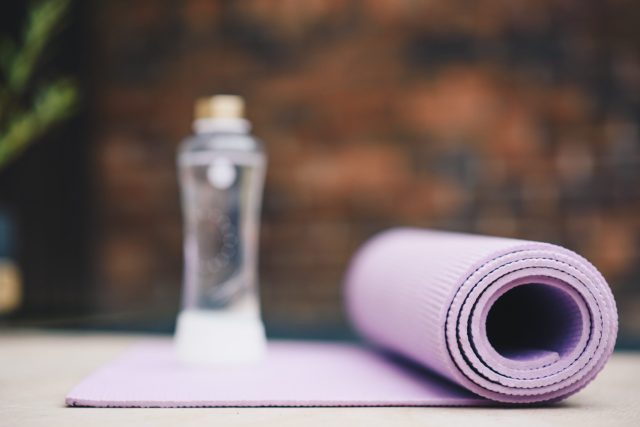
Bring a mat, whether you exercise at home or in a gym. Most gyms provide mats, but they are not very qualitative. The mat must be durable and have good traction. Yoga blocks may also be required for some poses – especially restorative poses.
Whether you go for hot yoga or other physical practices, get a bottle of water – you might get dehydrated. Also, a towel is mandatory if you tend to sweat a lot. Just because the exercise is light, even a calming pose could get you to sweat.
If you want yoga to become a regular practice, you should also familiarize yourself with beginner poses – just watch a few tutorials online. Stay away from heavy meals before the actual session, and let the instructor know you are new to it – in case you do it with a practitioner.
Finally, just like for any other exercise for physical health, starting yoga is not about poses, but about warming up. You will need to spend a few minutes warming up – nothing too intense, but mostly some stretching exercises.
Easy beginner poses for yoga practice
There are so many benefits of different types of yoga that you barely know where to begin. No matter what your goals are, you need to start with the basics before going for more advanced poses. So, what poses should you focus on first?
Mountain pose
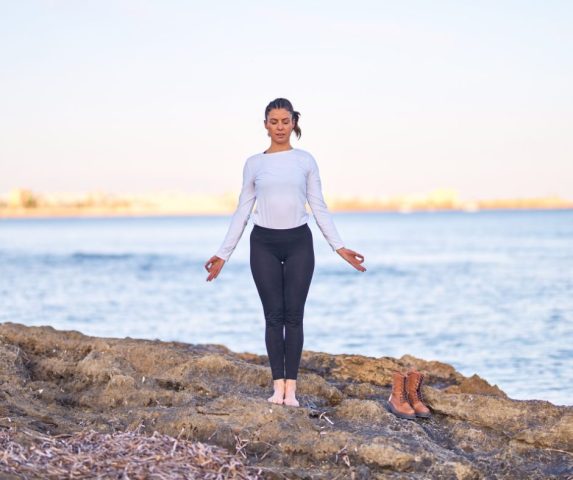
This pose is the foundation of many other poses, so you need to master it before moving on. Start in a neutral position. Keep your arms parallel by your side. Ground feet and make sure they are pressed into the ground. Keep legs straight and tuck the tailbone a bit in. Your thigh muscles should also engage.
Breathe in as you extend the arms up, then exhale and release shoulder blades – arms back by sides.
Child’s pose
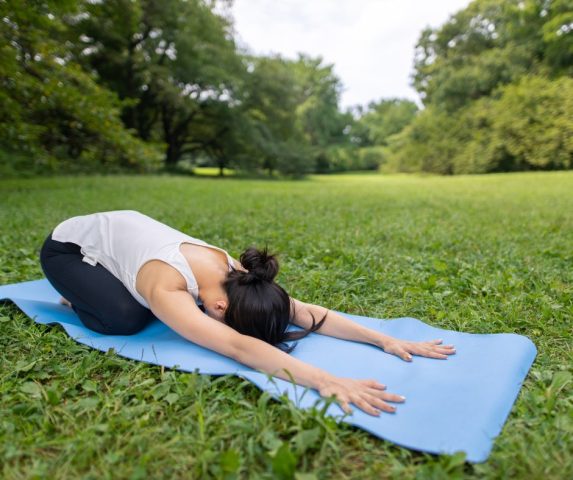
This pose will help you reset and can relax the nervous system – not suitable for those with knee problems, so take it easy. Begin in a kneeling position. The butt must go down towards the feet, while the upper body is stretched forward. Extend arms too.
Your stomach will rest on your thighs, and the forehead should touch the mat.
Cat pose
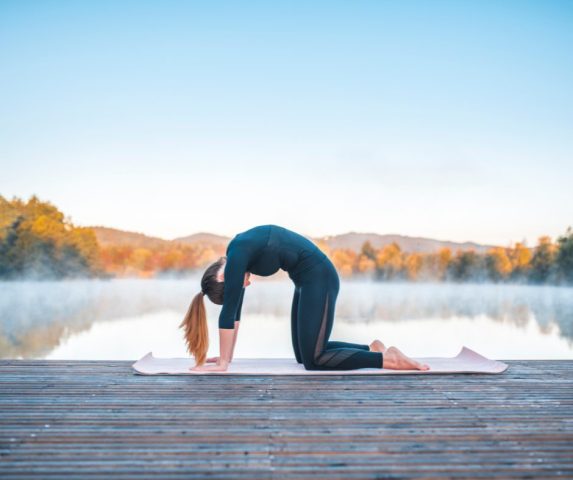
Also known as the cow pose, you must go on all four. Keep the spine neutral, but the abs engaged – tight muscles there. Both the right and left arms must be perpendicular to the ground. Both the left and right leg should form a 90-degree angle. Inhale, then exhale while rounding the spine up.
Your chin moves towards the chest, and the neck is free. The next exhale implies arching the back.
Downward facing dog
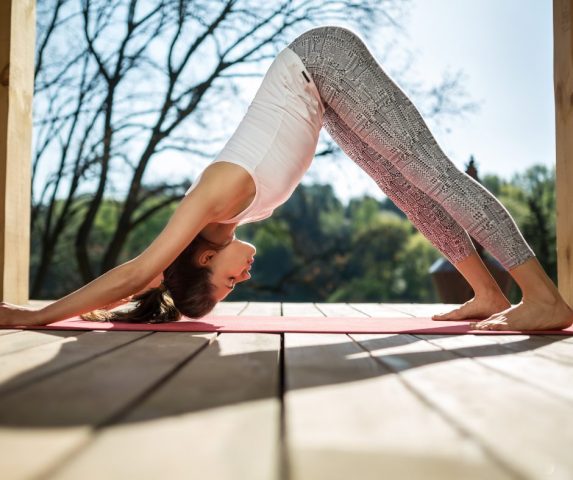
The point is to come up with a 90-degree angle by both the right and leg hip. Hands and feet are on the ground, and your butt is in the air, in a reverse V position. Go on all four – knees go under the hips. Lift arms and push up to reach that V position. You will feel a bit of pressure in your hamstrings.
Let the head hang heavy and do not let the pelvis forward, despite this tendency.
Corpse pose
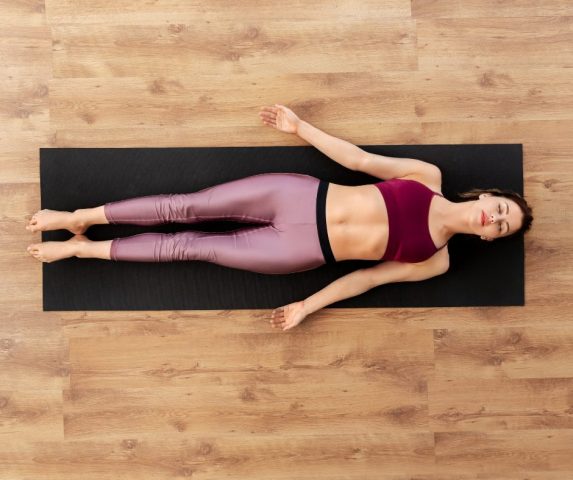
The corpse pose is basically about lying around. It is an extraordinary pose with numerous benefits for meditation. It will calm the mind and body, but it will also relieve stress. You will feel relaxed within seconds only.
Lie on the back – let the legs spread a little. Feet will fall on the sides. Palms should face the ceiling and slightly away from the body. Relax everything – your face too. You can stay in this pose for a minute or two.
Many supine poses start with this pose too.
Tree pose
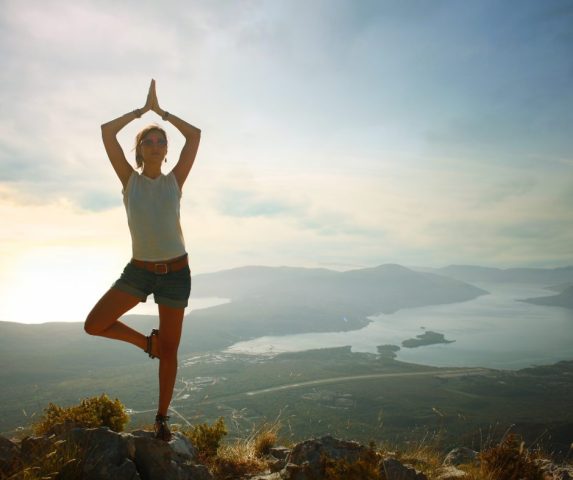
Stand and relax. Keep the feet shoulder-width apart. Lift the left foot and place the sole against the interior thigh of the right leg. Try to put it as high as possible. You will feel a bit of pressure in the left hip, but you will also need to maintain your balance.
The pose strengthens leg muscles and works on your balance.
What are the best yoga programs for beginners?
There are numerous yoga programs to help you start from the bottom, get everything in place, and enjoy a beautiful and rewarding yoga adventure. Some of them stand out in the crowd – here are the front runners.
6 Best Yoga Programs for Beginners
| Product | Key Feature |
|---|---|
| Top Consumer's Choice | |
| Best Overall Yoga Program | |
| Best Yoga Program for Women | |
| Best Yoga for Beginners | |
| Best Yoga Program for Core Strength | |
| Best Program for Lower Body Strength |
1. Top Consumer’s Choice: Yoga Burn
Yoga Burn spreads over 12 weeks and is aimed at women interested in losing fat and toning their bodies this is about reshaping the body. It is aimed at women interested in achieving the classic yoga booty that drives all men crazy. The program is made by Zoe Bray-Cotton – known for others too.
The program is progressive. You are less likely to repeat the same thing over and over again. Instead, workouts become more difficult, so you will always be challenged and relaxed at the same time. You will always be entertained and excited about the next workout, not to mention the calorie-burning process.
Shop at Yoga Burn’s Official Website.
Full Article: Yoga Burn Review: Does This Yoga Program Really Work?
2. Best Overall Yoga Program: ShapeShifter Yoga
ShapeShifter Yoga will bring you in shape by burning calories in a relaxing manner – as effective as jogging. You will only need your body weight to tone your body. The program includes guides, manuals, charts, and follow-along videos.
Mostly aimed at women, the program is good for people of all skill levels. You only need to exercise 20 minutes a day, three days a week. It takes time to reach results, but consistency will show a change once the program is over.
Shop at ShapeShifter Yoga Official Website.
Full Article: Shapeshifter Yoga Review: Does This Fitness Program Really Work?
3. Best Yoga Program for Women: Yoga Burn Booty Challenge
The Yoga Burn Booty Challenge program is based on three phases – priming, activating, and pumping. It brings in a bunch of poses that will mostly focus on your relaxation, as well as muscles around your legs and booty, only to give you that famous yoga appearance.
The program is easy to implement and includes workouts, sheets, and everything you might need to stay motivated. It comes with follow-along videos, so you know precisely that you are doing poses correctly – just like having an instructor.
Shop at Yoga Burn Booty Official Website.
Full Article: Yoga Burn Booty Challenge Review: Does it Program Really Work?
4. Best Yoga for Beginners: Body Wisdom Yoga Complete
Multiple routines, easy poses that become more and more difficult, detailed explanations, pictures, and videos – this is what you can expect from Body Wisdom Yoga Complete, one of the simplest guides for newbies.
The program will take you from nothing and turn you into an intermediate yoga user. You will have the foundation for further development, but that is a completely different story – this program is only aimed at beginners.
Shop Yoga Complete for Beginners at Amazon.
5. Best Yoga Program for Core Strength: Gentle Yoga Plus Pilates
The Gentle Yoga program takes you a bit further. Not only is it based on yoga, but all the poses you will learn here will also help you move on to Pilates and other types of practices. Everything revolves around your core, though.
The program adds to your balance and flexibility too, but more importantly, it will help you get rid of those stubborn layers of fat covering your abs – whether at the front or on the sides. It takes time, and it requires consistency, but it works.
6. Best Program for Lower Body Strength: Yoga Fusion Fix
You only need a towel or a mat, but you can also benefit from a blanket or a pillow for certain exercises. The Yoga Fusion Fix program is split into three sessions. One of them is for relaxation and takes 15 minutes. The second one is for balance and core and lasts 20 minutes.
The last part is the most comprehensive one and is suitable for strength and flexibility. It will target the lower body, but it will also connect to the top. Overall, the program takes 65 minutes to complete and can be adjusted whenever you repeat it.
Shop Yoga Fusion Fix at Amazon.
The bottom line, the list is longer than that, and there are plenty of choices out there. Yoga Burn is by far the most appreciated option out there based on users’ reviews and popularity. Not only is it developed by someone who created such a program before, but it is also well detailed and comes with more bonuses.
You can perform it at home and adjust it to your current skill level.
Conclusion
Yoga for beginners is not as difficult as it may seem. A bit of guidance is important. The bad news is personal trainers can cost a fortune in the long run. The good news is a professional program is more cost effective and can be done at home.
Yoga Burn is among the most appreciated programs out there. Indeed, you do not have a trainer to push you from behind and motivate you, but the program itself is so well developed that boredom will never kick in.
>> Related Article: 7 Best Yoga to Lose Weight for Beginners and Expert Yogi in 2024
Yoga for beginners FAQs
How often should I do yoga as a beginner?
If you are new to yoga, two or three sessions a week will do for the first few months. You might experience a bit of soreness, so you will need a few days to recover. The frequency allows your muscles to get used to the stretches too.
Are 30 minutes of yoga a day enough?
Half an hour of yoga a day will most likely change many unhealthy habits in your lifestyle and give you a better approach to life. Unlike other workouts, yoga does not feel like one. Instead, it feels like a relaxation exercise.
Can you stay fit with just yoga?
Absolutely. Yoga will also build muscle, tone your current muscle and build strength, apart from improving your balance and helping you relax. Based on how overweight you are, you may need to do it more intensely to burn fat.
Vanessa Richards
Vanessa is a mom of 3 lovely children and a software geek. Outside of her career as a health and wellness instructor. She enjoys writing and researching on topics such as finance, software, health and culinary.

